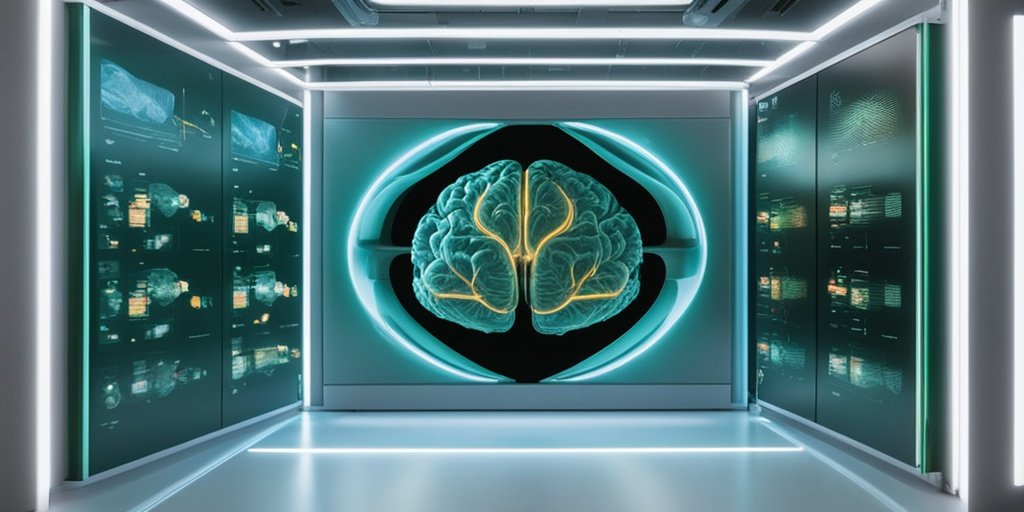⚡ Quick Summary
This article explores the transformative role of Deep Learning (DL) in analyzing Magnetic Resonance Imaging (MRI) scans for Alzheimer’s Disease (AD). By integrating Cloud Computing (CC), the study presents a novel framework that achieved a remarkable test accuracy of 99.285% using Convolutional Neural Networks (CNN).
🔍 Key Details
- 📊 Dataset: MRI scans for Alzheimer’s Disease
- 🧩 Models analyzed: CNN, VGG-16, and an ensemble approach
- ⚙️ Technology: Deep Learning integrated with Cloud Computing
- 🏆 Performance: CNN: 99.285%, VGG-16: 85.113%, Ensemble: 79.192%
🔑 Key Takeaways
- 🧠 Deep Learning models are proving to be highly effective in medical image analysis.
- 🌥️ Cloud Computing enhances the computational efficiency of DL models.
- 📈 CNN outperformed other models in classifying MRI scans for AD.
- 🔍 VGG-16 and ensemble models also showed promise but with lower accuracy.
- 🔒 Patient confidentiality and data privacy are maintained through the cloud framework.
- 📚 A systematic approach to medical imaging datasets is essential for developing disease-specific DL models.
- 💡 The study provides a tutorial framework for understanding model interactions with datasets.
- 🌍 Implications for healthcare could lead to improved diagnostic accuracy and patient outcomes.

📚 Background
Alzheimer’s Disease (AD) is a significant public health concern, characterized by cognitive decline and memory loss. Traditional diagnostic methods often rely on subjective assessments, which can lead to inconsistencies. The integration of Deep Learning in analyzing medical imaging offers a promising avenue for enhancing diagnostic accuracy and efficiency.
🗒️ Study
The study systematically investigates the application of DL in classifying MRI scans for AD. It begins with a classification taxonomy of medical imaging datasets, followed by a detailed case study focusing on the performance of three distinct DL models: Convolutional Neural Networks (CNN), Visual Geometry Group 16 (VGG-16), and an ensemble approach. The researchers designed a comprehensive framework that includes an input layer, a cloud-based preprocessing layer, and a diagnostic layer for issuing alerts post-classification.
📈 Results
The results were striking, with the CNN model achieving a test accuracy of 99.285%, significantly outperforming the VGG-16 model at 85.113% and the ensemble model at 79.192%. These findings underscore the potential of DL in enhancing the accuracy of medical image analysis, particularly for complex conditions like AD.
🌍 Impact and Implications
The implications of this study are profound. By leveraging Deep Learning and Cloud Computing, healthcare providers can achieve more accurate and efficient diagnoses of Alzheimer’s Disease. This advancement not only improves patient outcomes but also paves the way for broader applications of AI in medical imaging, potentially transforming how we approach various diseases.
🔮 Conclusion
This research highlights the remarkable potential of Deep Learning in revolutionizing healthcare, particularly in the realm of medical imaging for Alzheimer’s Disease. The integration of Cloud Computing enhances the capabilities of DL models, leading to superior diagnostic accuracy. As we continue to explore these technologies, the future of healthcare looks increasingly promising.
💬 Your comments
What are your thoughts on the integration of AI in medical imaging? We would love to hear your insights! 💬 Leave your comments below or connect with us on social media:
Revolutionizing healthcare: a comparative insight into deep learning’s role in medical imaging.
Abstract
Recently, Deep Learning (DL) models have shown promising accuracy in analysis of medical images. Alzeheimer Disease (AD), a prevalent form of dementia, uses Magnetic Resonance Imaging (MRI) scans, which is then analysed via DL models. To address the model computational constraints, Cloud Computing (CC) is integrated to operate with the DL models. Recent articles on DL-based MRI have not discussed datasets specific to different diseases, which makes it difficult to build the specific DL model. Thus, the article systematically explores a tutorial approach, where we first discuss a classification taxonomy of medical imaging datasets. Next, we present a case-study on AD MRI classification using the DL methods. We analyse three distinct models-Convolutional Neural Networks (CNN), Visual Geometry Group 16 (VGG-16), and an ensemble approach-for classification and predictive outcomes. In addition, we designed a novel framework that offers insight into how various layers interact with the dataset. Our architecture comprises an input layer, a cloud-based layer responsible for preprocessing and model execution, and a diagnostic layer that issues alerts after successful classification and prediction. According to our simulations, CNN outperformed other models with a test accuracy of 99.285%, followed by VGG-16 with 85.113%, while the ensemble model lagged with a disappointing test accuracy of 79.192%. Our cloud Computing framework serves as an efficient mechanism for medical image processing while safeguarding patient confidentiality and data privacy.
Author: [‘Prasad VK’, ‘Verma A’, ‘Bhattacharya P’, ‘Shah S’, ‘Chowdhury S’, ‘Bhavsar M’, ‘Aslam S’, ‘Ashraf N’]
Journal: Sci Rep
Citation: Prasad VK, et al. Revolutionizing healthcare: a comparative insight into deep learning’s role in medical imaging. Revolutionizing healthcare: a comparative insight into deep learning’s role in medical imaging. 2024; 14:30273. doi: 10.1038/s41598-024-71358-7